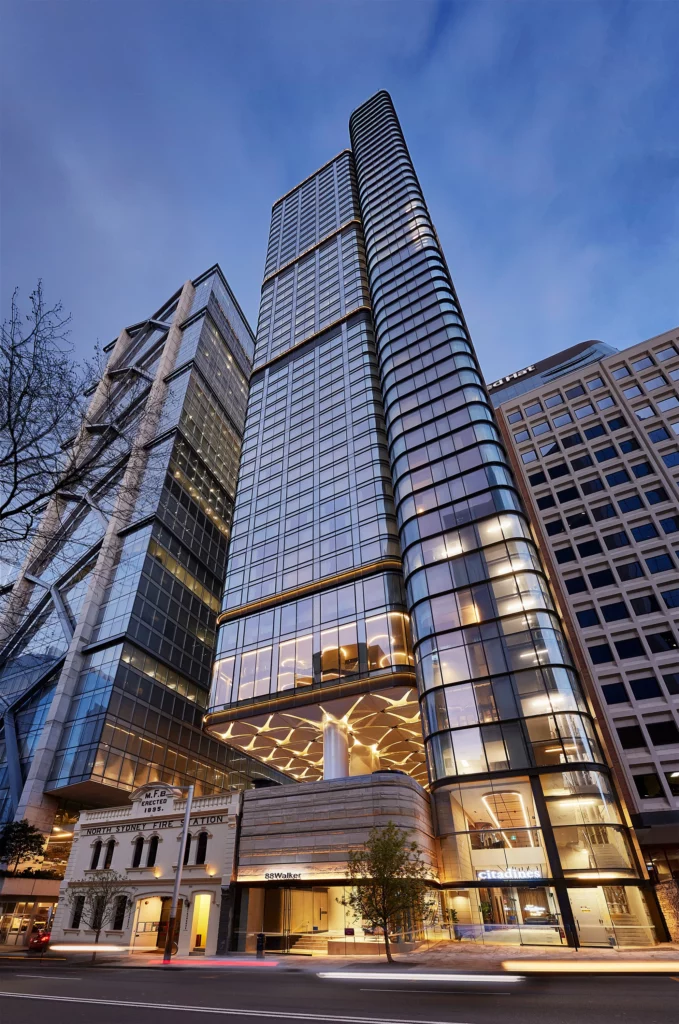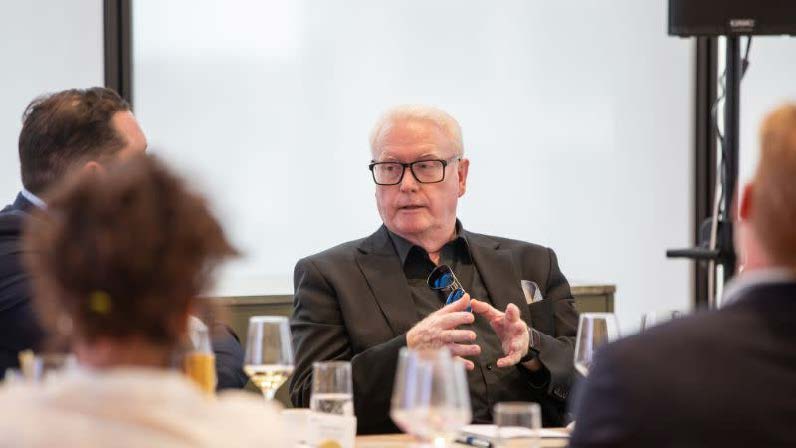It’s the second-fastest growing CBD in Australia, driving billions of dollars a year into the NSW economy.Yet developers say housing has been long frozen by what Billbergia development director Rick Graf calls “the dead hand of out-of-date planning controls”.
The Housing and Productivity Pathway is now rewriting the rules. The Housing Delivery Authority (HDA) has been given authority over “state-significant” projects, mostly cutting councils out of the process and fast-tracking developments stuck in limbo.

Few people, no new homes
According to the 2021 Census, average household size in North Sydney is 2.0 people, compared with 2.7 across Greater Sydney—making it one of the least crowded councils in metropolitan Sydney.
This light footprint isn’t translating into new supply.
According to Urban Taskforce Australia, based on ABS data from July 2024 to February 2025—covering the first eight months of the National Housing Accord—North Sydney Council approved 44 new homes from a pro-rata target of 787.
This is an exceptionally low 6 per cent of its target, making it the slowest performance of any council in Greater Sydney. Graf, whose company delivered the 50-storey 88 Walker Street—a commercial tower capped by a hotel and retail podium and now the tallest building in North Sydney—says Billbergia “accepted the facts of life” when it came to planning without apartments.
“Generally speaking, we do high-density mixed-use and we would always want to put residential into a project, but in North Sydney, that’s just not feasible under the council’s current regime,” he says.
He highlights “outdated planning” norms, pointing out “[the council] thinks because you’re doing residential in a town centre, you don’t need parking, but as far as the market’s concerned, you definitely do”.
Beyond controls on parking and density, Graf says the missing ingredient is people.
“If you want your CBD to have vitality, you’ve got to have people living there and North Sydney for many decades was quite desolate after 5pm and on weekends,” he says.
“Now, it’s improved somewhat, but it’s still very much a commercial centre without the vitality of having people living there 24/7/365.”
Council’s caution as state steps in
Mayor Zoë Baker takes a different view. She says the city centre is—and should remain—primarily a commercial hub and council will resist large-scale residential towers seen as risking its economic role.
“The North Sydney CBD is now the second-fastest growing in Australia, and protecting its economic output is critical,” Baker says.
“The commercial zone of the CBD makes up only 2 per cent of the North Sydney local government area but drives most of the LGA’s $23-billion annual output for the NSW and national economy.
“The council’s policy position is to continue to protect and strengthen this commercial core to provide for capacity for jobs growth.
“Surely NSW is sophisticated enough to not only plan for housing but to ensure planning for employment and economic growth simultaneously.”
For years, this stance kept residential proposals sidelined, or left sites stuck in limbo while negotiations went nowhere.
Now the State Government is stepping in. Premier Chris Minns announced the Housing Productivity Pathway late last year, and Planning Minister Paul Scully formalised the creation of the HDA.
Since then, across NSW more than 100 proposals have been declared state significant— potentially delivering nearly 40,000 homes.
“We very strongly support the HDA in its approach to developing projects right across Sydney, not just North Sydney,” Graf says.
“They understand … we’ve got to deliver more housing for more people more quickly. “It’s only by taking off the dead hand of out-of-date planning controls … that you can achieve better outcomes and more housing and, in a lot of cases, it’s mixed-use developments that deliver the commercial as well as the residential.”
Mayor Baker says council still plays an important role but with limited resources often finds its feedback “ignored” once projects move up to the state.
“In some instances, amendments have been made or conditions imposed … In other cases, council’s feedback has been ignored,” she says.
The train station test case
That tug-of-war is now being tested in real time around North Sydney train station.
Three adjacent parcels—5 Blue Street, 15 Blue Street and the Mackenzie Street corner at Lavender Bay—have all been declared state-significant.
Zurich has plans to replace its outdated 14-storey headquarters at 5 Blue Street with a 29-storey tower of about 400 apartments, retail and a refreshed plaza.
Next door, Aqualand wants a 30-storey tower with about 200 apartments above a new public square and second station entrance. Planning documents describe the two schemes as “strategically aligned”, pointing to a co-ordinated precinct rather than piecemeal development.
Across the road, the Archdiocese of Sydney—working with St Vincent de Paul Society Housing Australia—has proposed a mixed scheme spanning 1-13 and 17-19 Mackenzie Street, plus 211 Blues Point Road in Lavender Bay.
It would deliver 186 apartments, 27 per cent affordable, across three new buildings while retaining the heritage-listed St Francis Xavier Catholic Church at 17 Mackenzie Street.
A pedestrian link to the station is also planned. Mayor Baker acknowledges the promise but presses for better place-making.
“There are three residential proposals around North Sydney train station that are all being considered separately by the HDA … best practice placemaking would have those sites considered together,” she says.
Beyond the station
Other projects are also moving through the pathway. The long-running Cbus Property, Galileo Group and Abadeen joint venture, planned for a 3952 sqm site at 11-17 Hampden Street and 173-179 Walker Street, ran into a council “deemed refusal” in 2022. The partners launched an appeals before withdrawing and reworking the scheme.
The revised $256-million design, by Rothelowman, was approved in April under the HDA’s state-significant pathway.
It now comprises a 30-storey tower of 161 market apartments, a 12-storey block offering 67 affordable units plus 11 more secured via a planning agreement, a four-storey amenities building and a shared basement with parking and bike storage.
Aland took over in a $240-million off-market deal, buying the site from the joint venture, which had originally paid around $180 million for it four years earlier.
Beside the new Victoria Cross Metro, Sydney Metro has advanced a rezoning proposal for 52 McLaren Street—not through the Housing Delivery Authority but via the standard planning system. The scheme, still under assessment, would allow an 8 to 24 storey redevelopment of 172 apartments, childcare and new through-site links.
Public benefits, including affordable housing and community amenities, are proposed through a voluntary planning agreement.
And in Neutral Bay, Woolworths’ development arm, Fabcot, has returned with plans for 1-7 Rangers Road and 50 Yeo Street, where council resistance on height, bulk and traffic had previously blocked the scheme.
Now progressing through the HDA pathway, the $50-million project has reemerged as a part six-storey and part eight-storey mixed-use precinct with a supermarket, medical centre and commercial space topped by 70 homes, including an affordable housing component.
The council continues to call for a unified framework to protect heritage, guarantee design quality, secure public benefits and keep through-site links at the core of planning.



